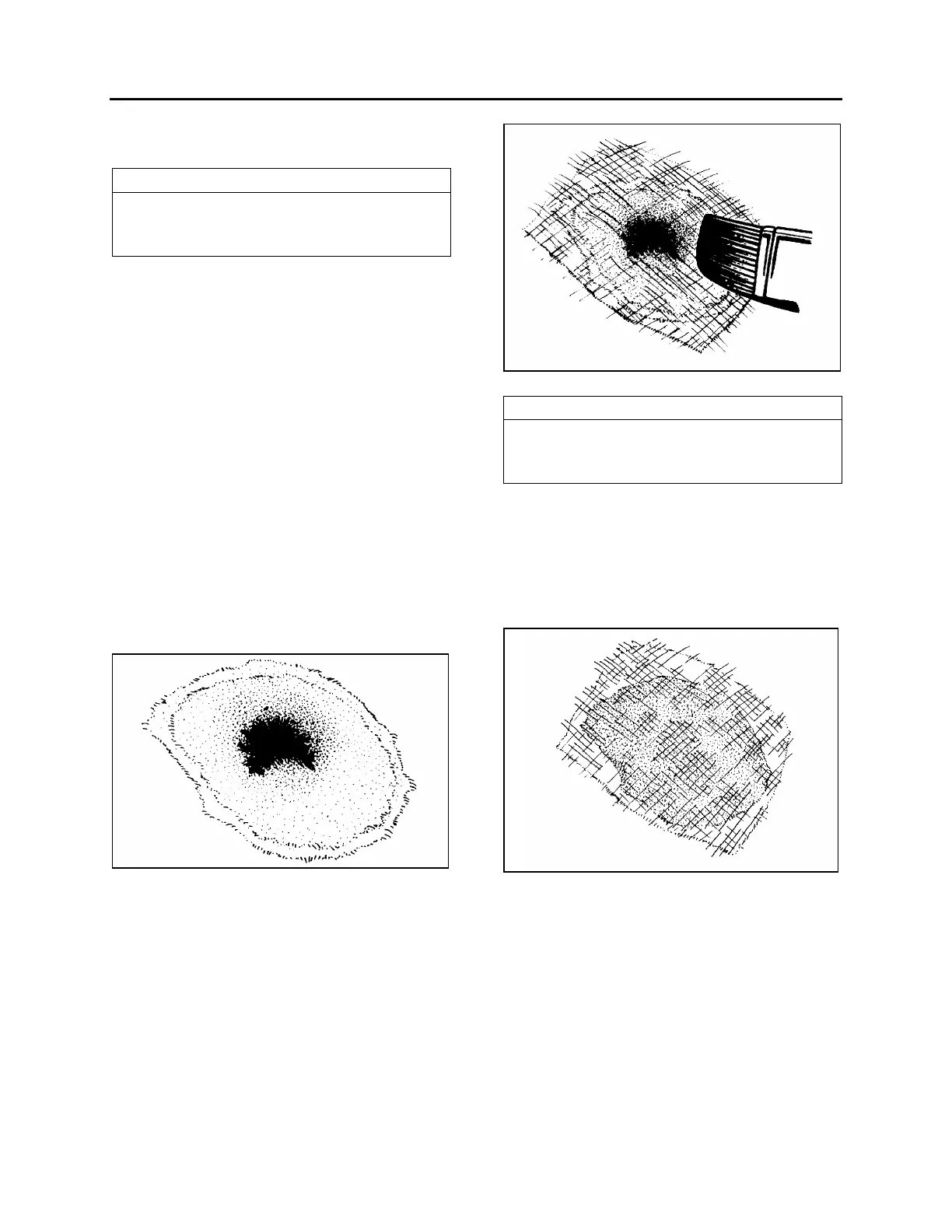Section 18: BODY
PA1553
16
instructions. Add powdered fiberglass strand into
mixture to thicken it into a putty state.
NOTE
If repair is made on a vertical surface, adding
powdered filler material to mixture will reduce
tendency of hot resin to flow or run.
Apply the material with a putty knife or similar
object, building material up to the desired
contour. For deep filling and on vertical surfaces,
several layers of material may be used.
A hacksaw blade, held flat to adjacent contour
and then moved in a sawing action across the
repair when the resin is in a gel state, will
remove excess resin from repair. Finish repair
with the same procedure as when using
fiberglass cloth.
4.3 TYPICAL FIBERGLASS REPAIR
PROCEDURE
Remove all loose particles or damaged material
using a power sander or rasp. Clean area,
overlapping hole approximately 1" to 1-½"
(25-40 mm) all around. Remove all dirt, grease
and paint from area to ensure good bonding
surface. Feather the cleaned area all around
(Fig. 4).
FIGURE 4: FIBERGLASS REPAIR 18089
Cut a piece of fiberglass mat slightly larger than
area being repaired. Impregnate mat with
general purpose polyester resin catalyzed
normally. Use a clean paint brush to apply the
polyester resin. Apply impregnated mat over
hole and press onto surface with brush to obtain
good adherence. Another coat of general
purpose polyester resin can be applied at this
time (Fig. 5).
FIGURE 5: FIBERGLASS REPAIR 18090
NOTE
Remove all air between surfaces being joined.
Allow area to harden and sand surface to
remove any wax.
Apply another mat, followed by a cloth patch,
and another mat. All layers must be thoroughly
impregnated with polyester resin, brushed well
and free of air. Apply more layers of mat and
cloth as required until the desired strength and
thickness is obtained, minimum two 1-½ oz
(43 g) mats and one 9 oz (255 g) cloth (Fig. 6).
FIGURE 6: FIBERGLASS REPAIR 18091
Allow area to harden and contour the area with
coarse sandpaper #100 (Fig. 7).

